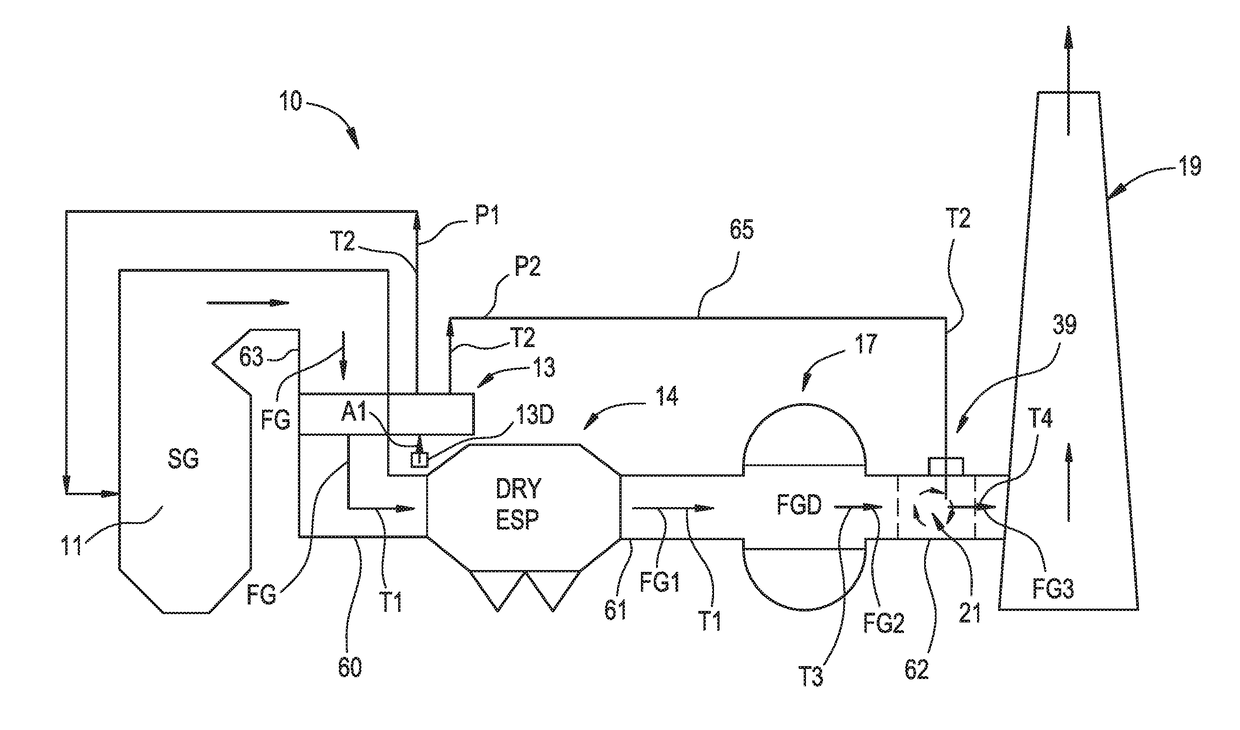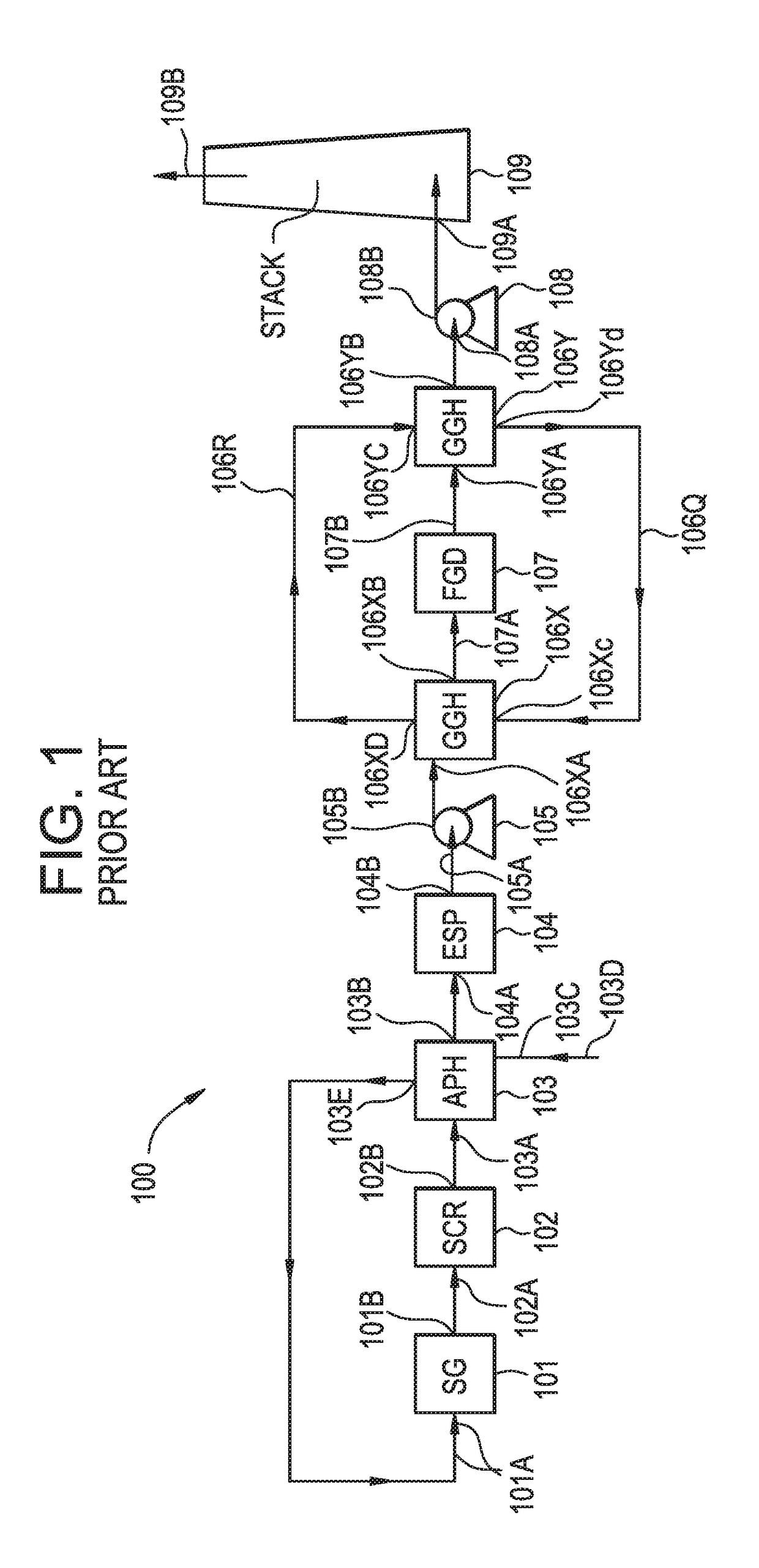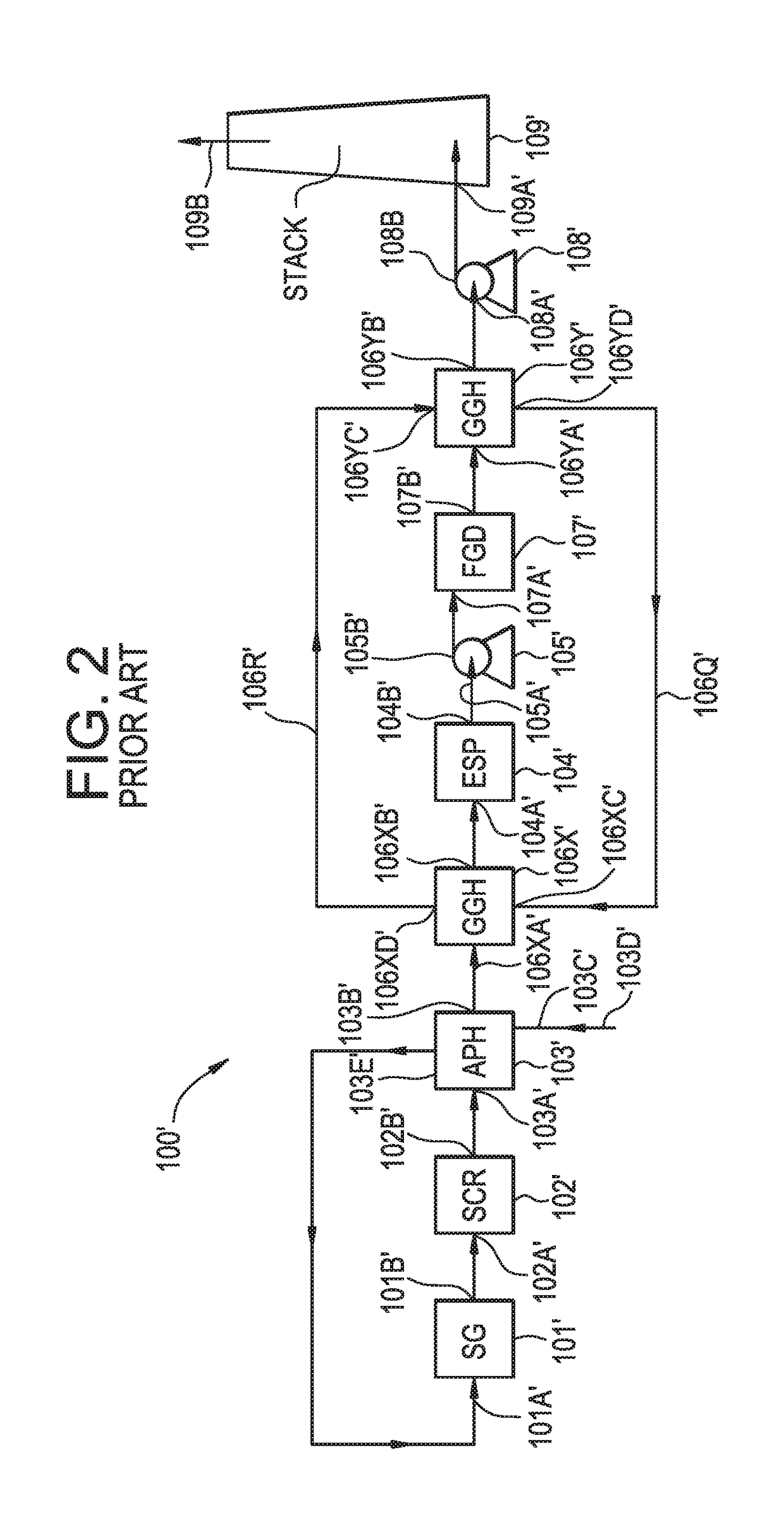Method and system for improving boiler effectiveness
a technology of boiler effectiveness and boiler efficiency, applied in the field of methods and systems, can solve the problems of inability to realize the full potential of increased aph efficiency available, difficult to create dry flue gas stream, and less efficient wet esp. the effect of steam generator system
- Summary
- Abstract
- Description
- Claims
- Application Information
AI Technical Summary
Benefits of technology
Problems solved by technology
Method used
Image
Examples
Embodiment Construction
[0054]As shown in FIG. 3, a system for improving effectiveness of a steam generator system is generally designated by the numeral 10. The steam generator system 10 includes a steam generator vessel 11 and an air preheater 13 (e.g., a rotary regenerative heat exchanger). The air preheater 13 is in communication with the steam generator vessel 11 via a duct 63. The steam generator system 10 includes an air supply system 13D configured to provide air to the steam generator 11 through the air preheater 13. The steam generator system 10 also includes a particulate removal system 14, a flue gas desulfurization system 17 and a discharge stack 19 in the configuration illustrated in FIG. 3. As used herein the term “improving the effectiveness of a steam generator system” includes: 1) maintaining the overall thermal efficiency of the steam generator system 10 while eliminating heat exchangers between the air preheater 13 and the discharge stack 19; 2) reducing fouling in the air preheater 13;...
PUM
 Login to View More
Login to View More Abstract
Description
Claims
Application Information
 Login to View More
Login to View More - R&D
- Intellectual Property
- Life Sciences
- Materials
- Tech Scout
- Unparalleled Data Quality
- Higher Quality Content
- 60% Fewer Hallucinations
Browse by: Latest US Patents, China's latest patents, Technical Efficacy Thesaurus, Application Domain, Technology Topic, Popular Technical Reports.
© 2025 PatSnap. All rights reserved.Legal|Privacy policy|Modern Slavery Act Transparency Statement|Sitemap|About US| Contact US: help@patsnap.com



